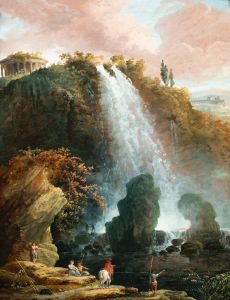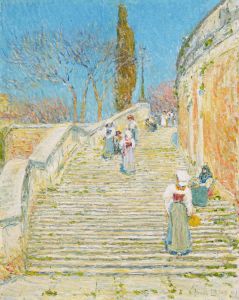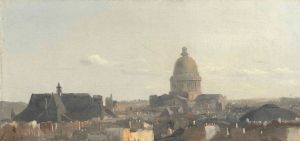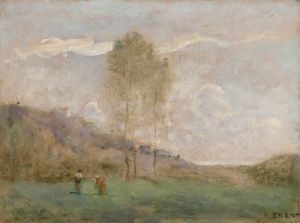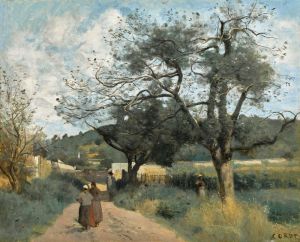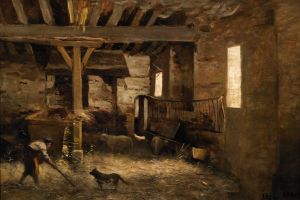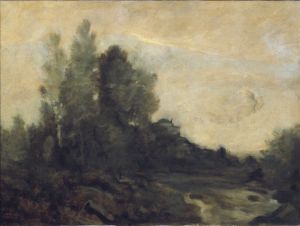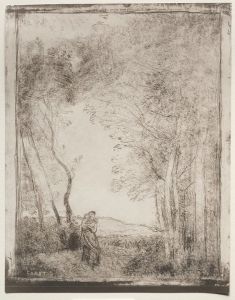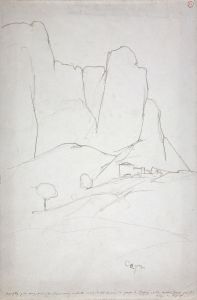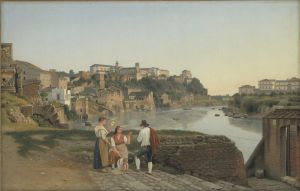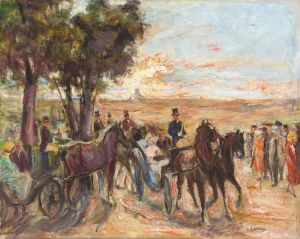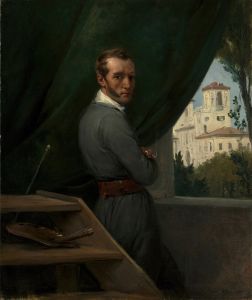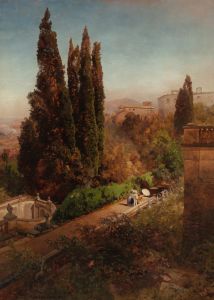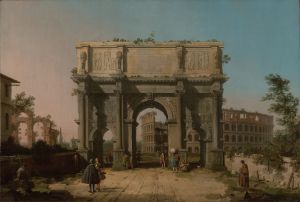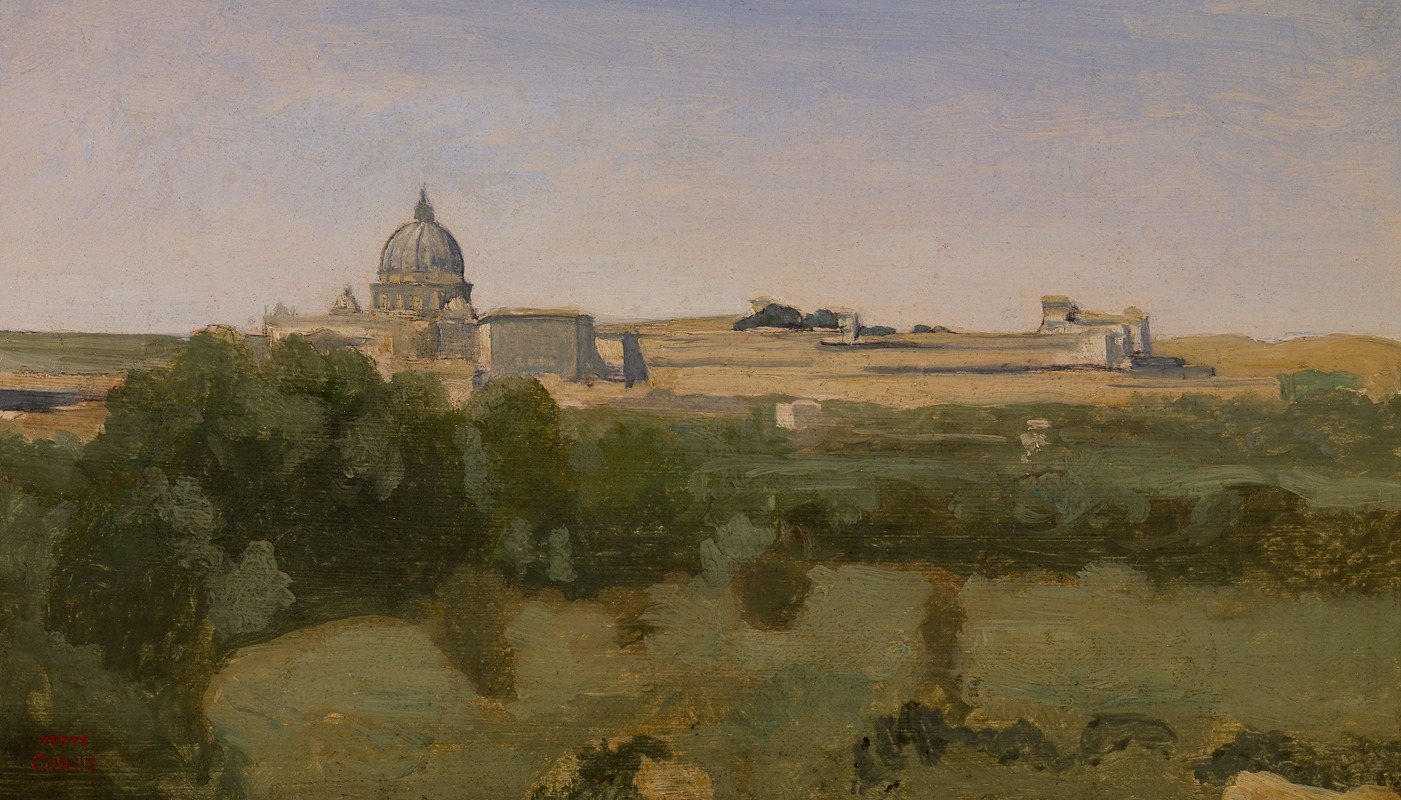
View of Rome from Monte Pincio
A hand-painted replica of Jean-Baptiste-Camille Corot’s masterpiece View of Rome from Monte Pincio, meticulously crafted by professional artists to capture the true essence of the original. Each piece is created with museum-quality canvas and rare mineral pigments, carefully painted by experienced artists with delicate brushstrokes and rich, layered colors to perfectly recreate the texture of the original artwork. Unlike machine-printed reproductions, this hand-painted version brings the painting to life, infused with the artist’s emotions and skill in every stroke. Whether for personal collection or home decoration, it instantly elevates the artistic atmosphere of any space.
Jean-Baptiste-Camille Corot, a prominent French landscape painter, created "View of Rome from Monte Pincio" during his travels in Italy. Corot, born in 1796, was a pivotal figure in the transition from Neoclassicism to Impressionism, and his works often reflect a harmonious blend of realistic detail and atmospheric effects. This particular painting is a testament to his skill in capturing the essence of a landscape with both precision and emotion.
"View of Rome from Monte Pincio" was painted during Corot's first trip to Italy, which lasted from 1825 to 1828. This period was crucial for Corot as it allowed him to study the works of the Old Masters and immerse himself in the Italian landscape, which profoundly influenced his artistic development. The Monte Pincio, a hill in Rome, offers a panoramic view of the city, making it a popular spot for artists seeking to capture the grandeur of Rome's skyline.
In this painting, Corot presents a sweeping view of Rome, characterized by its soft, diffused light and delicate color palette. The composition is carefully structured, with the foreground featuring lush greenery that gradually leads the viewer's eye towards the distant cityscape. The use of light and shadow in the painting is subtle yet effective, creating a sense of depth and atmosphere that is characteristic of Corot's work.
Corot's approach to this landscape is both realistic and poetic. He meticulously renders the architectural details of Rome's iconic structures, yet he also imbues the scene with a serene and contemplative mood. This balance between detail and atmosphere is a hallmark of Corot's style and demonstrates his ability to convey the beauty and tranquility of the natural world.
The painting reflects Corot's interest in capturing the transient effects of light and weather, a pursuit that would later influence the Impressionists. His technique of using soft brushstrokes and a muted color palette creates a sense of harmony and unity within the composition, inviting the viewer to experience the scene as a moment of quiet reflection.
"View of Rome from Monte Pincio" is an example of Corot's early work, which laid the foundation for his later, more mature style. It showcases his ability to blend the classical traditions of landscape painting with a more modern, expressive approach. This painting, like many of Corot's works, is celebrated for its ability to evoke a sense of place and emotion, capturing the timeless beauty of the Roman landscape.
Corot's influence on the art world extends beyond his own paintings. He was a mentor to many younger artists and played a significant role in the development of the Barbizon School, which emphasized naturalism and plein air painting. His work also paved the way for the Impressionists, who admired his ability to capture the fleeting effects of light and atmosphere.
In summary, "View of Rome from Monte Pincio" is a significant work in Jean-Baptiste-Camille Corot's oeuvre, exemplifying his skill in landscape painting and his influence on future generations of artists. The painting remains a testament to Corot's ability to blend realism with poetic expression, capturing the essence of the Italian landscape with grace and sensitivity.





